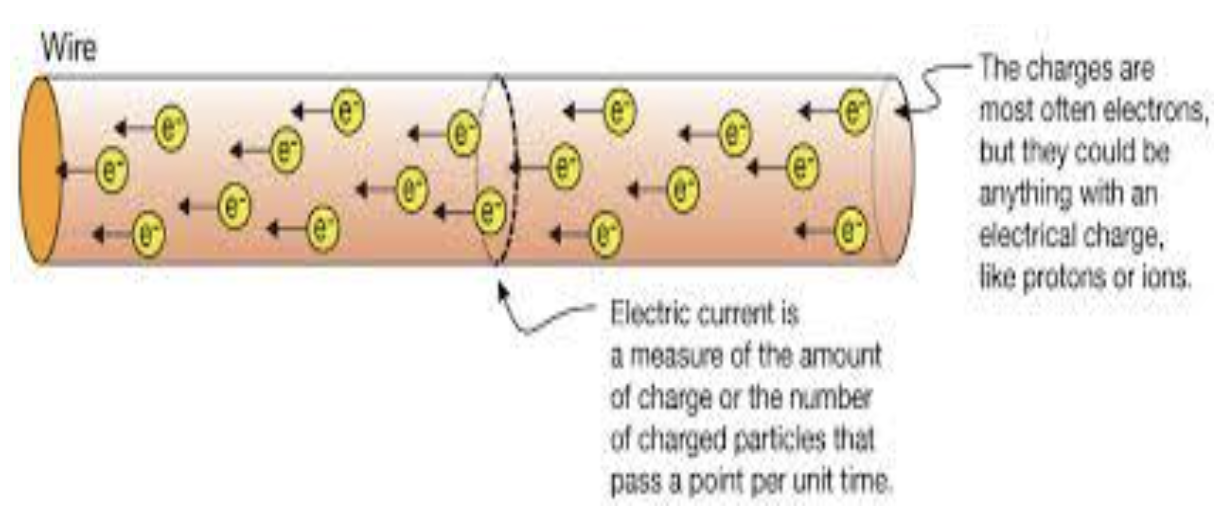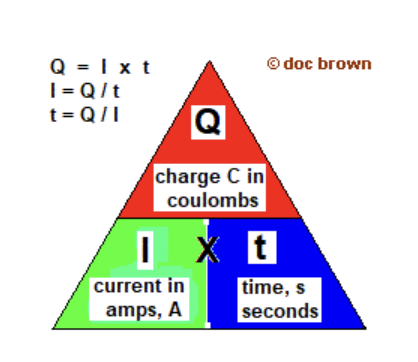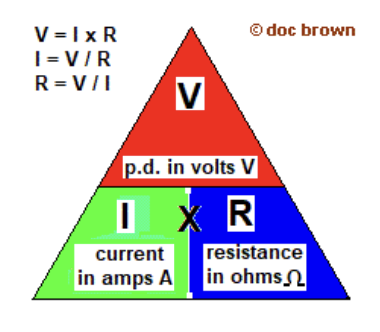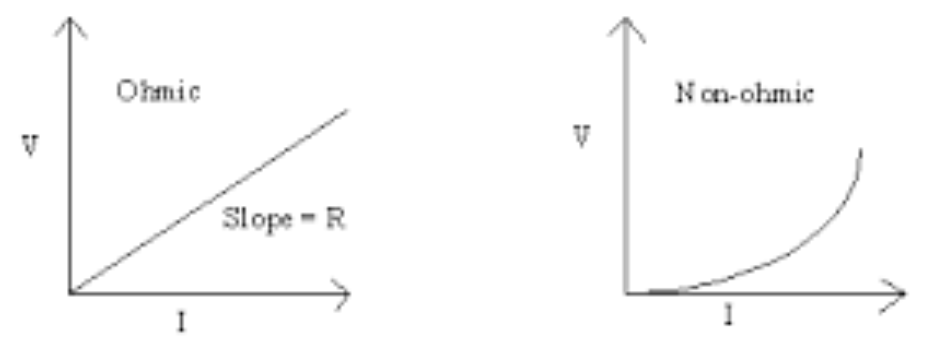How can we calculate basic electrical parameters?
In our last article, we looked at how we can select the best engineering material for the task. In this article, we’re going to move on to basic electrical parameters in D.C. circuits.
As an engineer, we need to be able to define these key terms and apply them to equations:
- Current
- Charge
- Ohm’s law
- Power
- Energy
Each of these could be an article on their own, so we’re going to do a surface level visit.
Current
Current, often represented as I, is developed from a flow of electrons:

The unit of current is an Ampere, represented as A. A unit ampere of current is constituted when 1C of charge is flowing in 1S.
If you’ve read our previous articles, hopefully you’ll remember that atoms consist of protons, neutrons and electrons. The protons and neutrons are in the nucleus, the electrons are in shells orbiting the nucleus. In conductors it’s possible for an atom to lose an electron, this changes the atom into an ion with a positive charge. The electrons have a negative charge and they are attracted to the nearest positive ion.
If a voltage is applied the electrons will no longer move in a random direction but will begin to flow (or drift) in one direction, this drift of electrons is the CURRENT:

So current is the rate of flow of electrical charge around a circuit. We know from everyday appliances that when we charge a device we need to supply a current and leave the current flowing for a length of time.
Charge
The quantity of charge is measured in coulombs. The coulomb represents 6.24 x 1018 electrons drifting past a point, this leads to the charge on each electron being 1.6 x 10-19C:

The current of 1 ampere is defined as 1 coulomb of charge applied for 1s, which leads us to our equation:

Where charge is measured in Coulombs (C), current is measured in Amperes and time is measured in seconds. Once we know the charge we can calculate the number of electrons by

Ohm’s Law
Ohm’s law states that the current through a conductor between two points is directly proportional to the voltage across the two points in a circuit:

It involves the most fundamental equation you need to know for electricity calculations. This can be expressed mathematically as:

rearrangements: V = IR and R = V/I
I = current in amperes, amperes, A
V = potential difference, p.d., volts, V;
R = resistance of the wire, ohms, Ω;

The potential difference in a circuit is the energy transferred per coulomb of electric charge that flows between two points in an electric circuit. Resistance is a measure of the reluctance of a conductor to inhibit the flow of charge. The greater the resistance of a resistor, the more it resists and slows down the flow of electricity.
Ohm’s law means that the R in this equation is a constant, independent of the size of the electrical current flowing. The law correctly applies to ohmic conductors, where the current flowing is directly proportional to the applied potential difference, but some resistors don’t obey this law e.g. the heated filament of a light bulb.

Power
From Mechanics we know that Energy (also known as work done) = Distance moved x Force required. Power may be stated as being, “the rate at which we do work” and it is measured in Watts.

For example, if we needed to build a bookcase, we could use a manual screwdriver to screw the pieces together or we could use an electric screwdriver. When we have finished, the work done will be the same in both cases, since we will have two identical bookcases, but the electric screwdriver will do it more quickly because its power is greater.
Power depends on the work to be done (Energy) and the time it takes:

Power is measured in Watts or Joules per second.
Energy
As we’ve seen, energy transferred by device = appliance power x time. Time has to be in seconds, Energy in joules and Power in Watts. Energy transfer per unit of charge = potential difference (p.d.) and calculations based on

Charges transfer energy to components as they pass through by doing work against the resistance of the component:

The bigger the fall in p.d., the greater the energy transferred, because the charge starts off with a greater potential energy. Therefore a power supply with a bigger source p.d. (V) can supply more energy to the circuit per unit of electric charge (the coulomb, C).
The bigger the p.d., the more energy the same quantity of electric charge can carry. If we combine Q = I x t and E = Q x V we get:

Keep an eye out for our next articles looking into electrical cells and their principles.
Interested in our courses?
You can read more about our selection of accredited online electrical engineering courses here.
Check out individual courses pages below:
Diploma in Electrical and Electronic Engineering
Higher International Certificate in Electrical and Electronic Engineering
Diploma in Electrical Technology
Diploma in Renewable Energy (Electrical)
Higher International Diploma in Electrical and Electronic EngineeringAlternatively, you can view all our online engineering courses here.
Recent Posts
A Quick Guide to Thermal Stress
A Quick Guide to Thermal Stress Thermal expansion and the resulting thermal stress are key concepts in engineering and physics. They describe how materials expand or contract when exposed to temperature changes. Understanding these principles is essential for designing structures and systems that can withstand environmental fluctuations without failure. What is Thermal Expansion? When materials […]
How to Calculate Shear Stress
Introduction to Shear Force and Shear Stress Shear force and shear stress are critical concepts in mechanics and materials science, often encountered in structural engineering and manufacturing. Shear Force refers to the internal force in a material that acts parallel to its cross-section. It is measured in Newtons (N). Shear force arises when two opposing […]
Kirchhoff’s current and voltage laws
Kirchhoff’s current and voltage laws In our last article, we looked at the principles and operation of a d.c motor. In this article, we’re going to investigate Kirchoff’s current and voltage laws, as well as how to apply them to engineering problems. Kirchoff’s law of current Kirchoff’s law of current states that the algebraic sum […]

